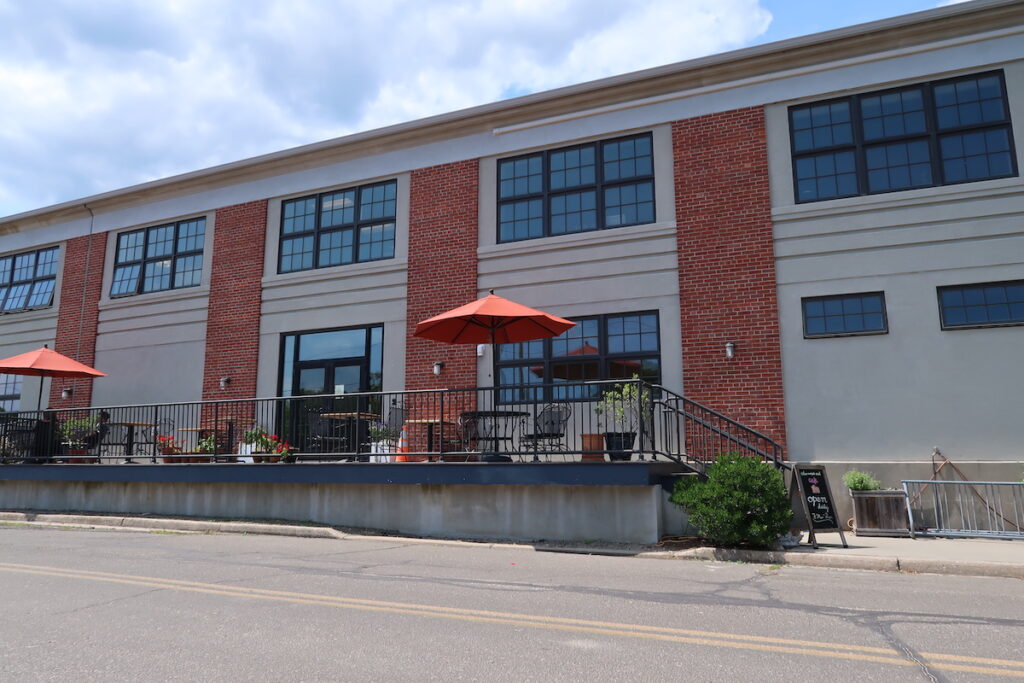Looking for local in the wider world
In the past few months, I have traveled to some very different places. In an unscientific way, I’ve had a chance to see wine consumption trends outside our cosmopolitan Long Island market.
First, to fend off winter, I went to Bonaire, a desert island 50 miles off the coast of Venezuela, owned and frequented by the Dutch. Bonaire’s only industry is salt. There are acres of salt beds, all controlled by the massive agribusiness Cargill. Other than that and a tiny butterfly farm, Bonaire’s economy depends on money spent by visiting snorkelers and scuba divers. While the rest of the Caribbean’s fragile reefs have been trashed by commercial fishing and development, Bonaire has worked to preserve and protect its marine ecosystem. The last active breeding ground for turtles in the Caribbean, Klein Bonaire (a smaller island facing Bonaire’s capital port) was literally wrested from Donald Trump’s clutches and preserved for all in 1999.
Beverages are a big issue in Bonaire because the air is dry; it’s windy, and the sea (where most visitors are immersed) is extremely salty. I never knew how thirsty I could get until I went there. Water, water, everywhere, but nary a drop to drink! Bonaire’s white coral beaches are strewn with plastic that has floated onshore from the world’s garbage dumps. I vowed never to buy bottled water again.
Obviously, the thing to drink there is rum. But I don’t drink distilled spirits. (OK, maybe a sip or two. My daughter-in-law makes an incredible pineapple-rum punch.) In the week I spent there, we ate out every night. The food was very Dutch — heavy on the meat with gravy, boiled potatoes and turnips, for instance. Believe me, you don’t want the steak! Get the catch of the day. Ask if it’s been frozen.
Most restaurants had a very similar wine list. Freighters don’t get to Bonaire all that often, and although there is a wine warehouse there, it’s not entirely air-conditioned, and you probably have never heard of the wines they sell. Many come from Argentina, Chile or southern France. Bonaire’s online chat warns of one source: “Do not buy the CÃ¥tes de RhÃ¥ne. It was fried.”
In the end, we found some drinkable French chardonnay for around $15 a bottle. We also saw it in the grocery store for $5. After dinner, when we went night snorkeling, the fish glowed.
Another call of the wild got me as far as Indianapolis, that booming Midwestern metropolis where sports are a far more common topic than wine, and everyone says, “We’re blessed.” In the arts district of Broad Ripple, we found a fine wine bar that really didn’t have many wines (not even Ripple). But it was a good place to watch the city’s youth stroll through the intersection. Waiting for the light to change is apparently a good time to steal a kiss. And in the basement, where everyone drank beer or harder stuff, they had rousing bluegrass music. It way outshone the wine selection there.
On a midweek excursion to Miami to escape the March winds, I found a more narrow choice of wines than expected, but I was pleased to see a couple of Long Island wines on the list at Michy’s, Miami’s “second favorite restaurant” (but not mine). The Bedell Cellars was sold out, but they offered some nice Mattebella Vineyards wines from Southold. My first and second favorite restaurant (since I went there twice) in Miami was Scott Conant’s Scarpetta at the Fountain¬bleau. The half-liter of Gavi di Gavi was perfect alfresco. I also loved the South Beach Cuban diner Puerto Sagua, but not for wine.
In April, moving on to Tucson, I visited a transplanted friend from Orient, Charlotte Hanson. Bob Feger and Teresa Taylor, fellow North Forkers who winter in Arizona, joined us for dinner and brought their favorite Pindar wines all the way from Peconic for us to enjoy. The Pindar 2007 Syrah was spectacular with mesquite-grilled lamb chops and roasted peppers — a felicitous example of “East meets West.”
Charlotte also took me to Tucson’s most popular place for serious but casual foodies, a storefront called Feast. Here, the wine list was most impressive, especially the selection of half-bottles. It included a chardonnay from Dr. Frank in the Finger Lakes, and the owner told me he sometimes carried wines from Long Island’s Paumanok Vineyards.
When I got home, I spoke with both Pindar’s winemaker, Les Howard, and Paumanok’s winemaker, Kareem Massoud, about why it’s so hard to find Long Island wines outside of New York. Howard told me that, although Pindar is Long Island’s largest winery, making over 70,000 cases of wine a year, “over 90 percent is sold at the winery.”
Paumanok is much smaller (fewer than 9,000 cases), but its out-of-state situation is similar. “We pursue opportunities as they present themselves, and we are in Japan. That’s as far as you can go,” Massoud explained. “It’s a fraction of our business. Right now, we have no distribution in the U.S. out of state. There is no great incentive to go beyond home; we lose margin, and we can sell everything we make here. Besides, selling worldwide collides with the idea of being environmentally sensitive and drinking local. When in Rome, drink like the Romans!”
Kareem paused, then added, “When New Yorkers think like Romans, the wineries on Long Island will be in trouble because we don’t make enough wine to supply them. But when that happens, we’ll never have to think about marketing again.”
Ms. Hargrave was a founder of the Long Island wine industry in 1973. She is a freelance writer and consultant.








